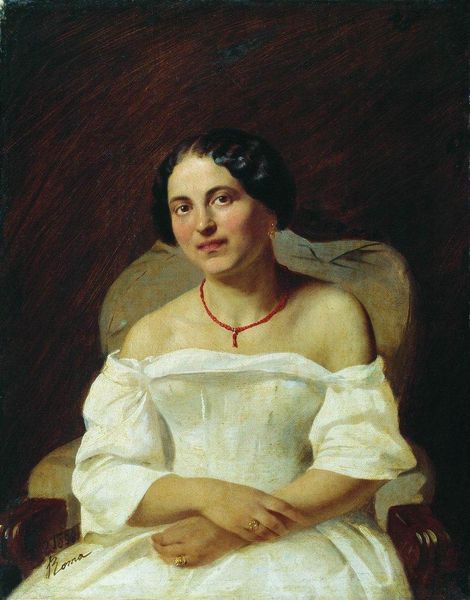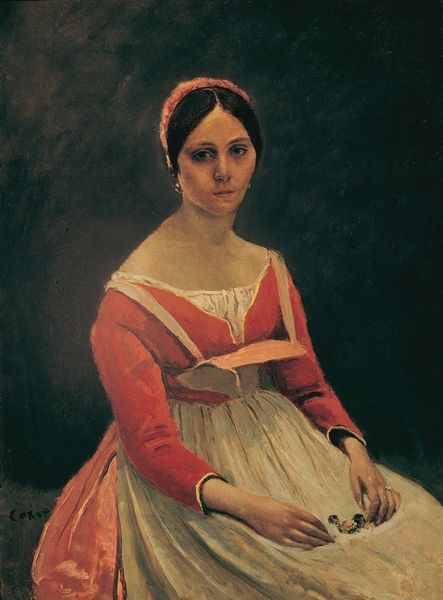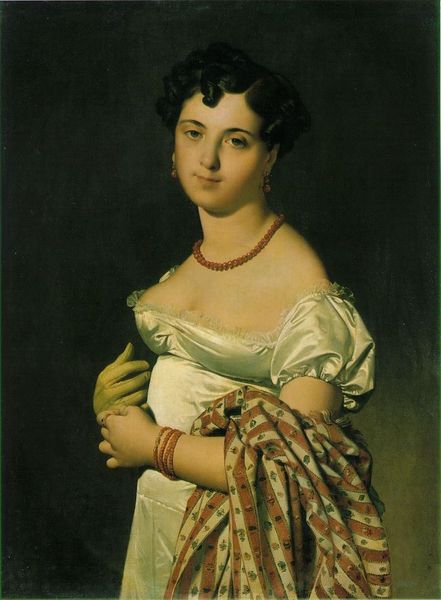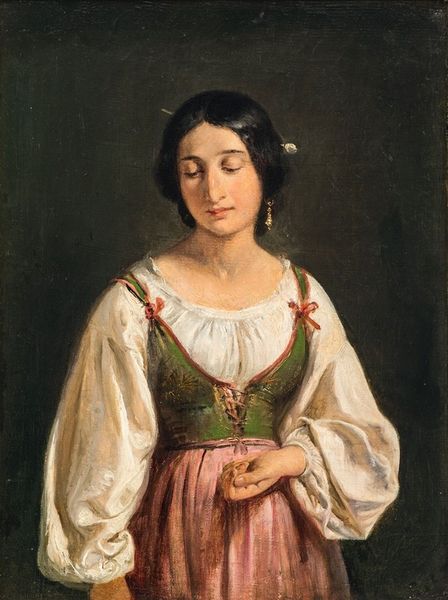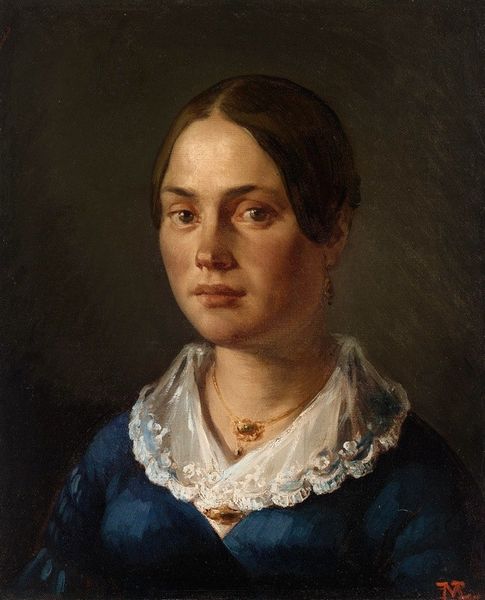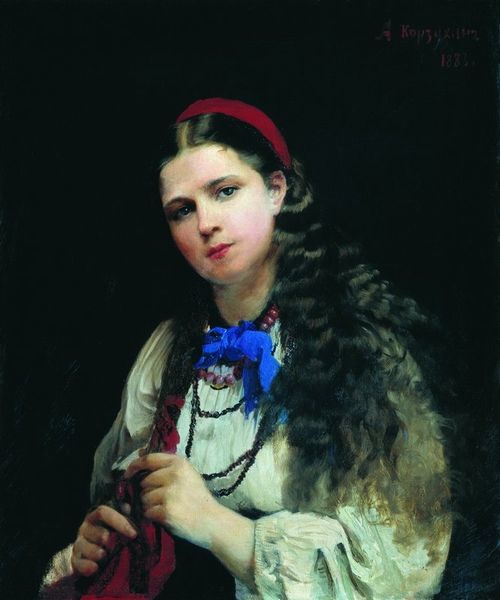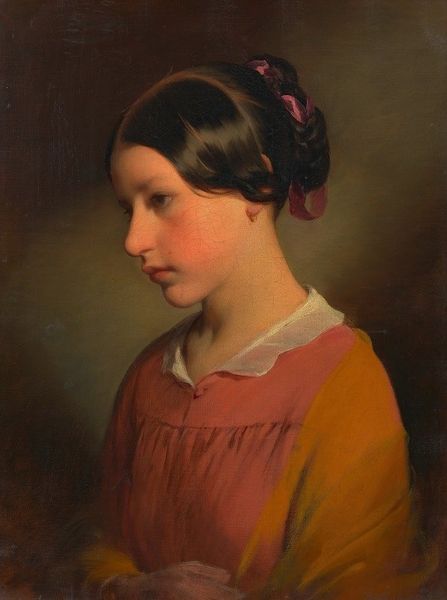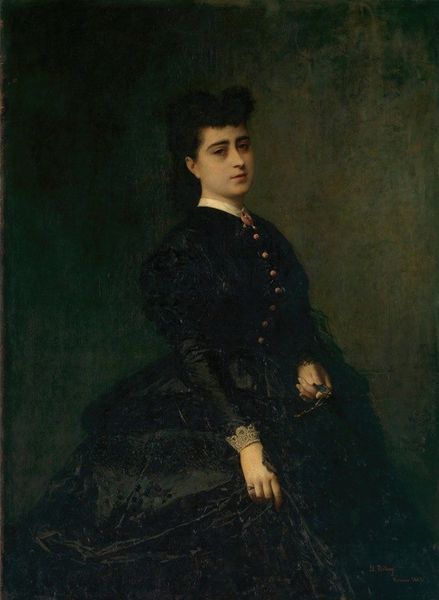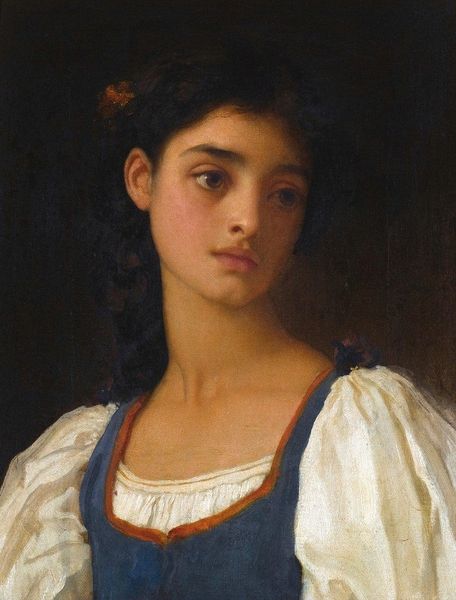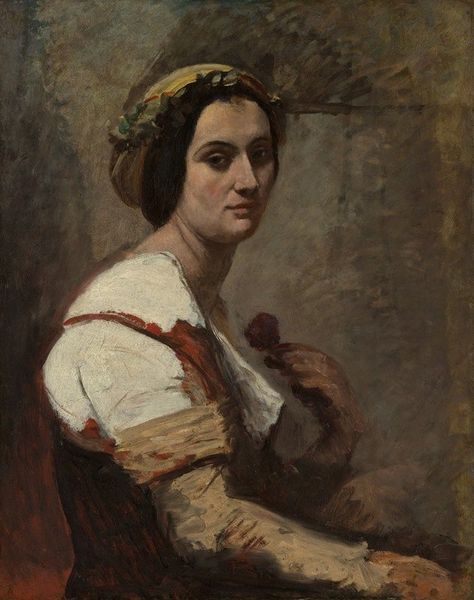
Copyright: Public Domain: Artvee
Wilhelm Marstrand made this portrait of Miss Vilhelmine using oil paints, a staple of fine art since the Renaissance. But look closely and you'll see that painting is only part of the story. The real work, literally, is in the rendering of her clothing. Notice the way the dark fabric of her dress is articulated, its subtle folds suggesting a heavy material, expertly draped. But the real virtuosity is on display in the lace trim at her collar and cuffs, rendered with incredible precision. Consider the labour involved in the production of actual lace at this time, its intricate patterns built up thread by thread, often by women working in harsh conditions. Marstrand, here, is not just painting a portrait, he is also representing an entire economy of making, one in which artistry and industry meet. It asks us to think about the real, material conditions of production. When we understand this, we begin to appreciate the deep connections between art, craft and social life.
Comments
No comments
Be the first to comment and join the conversation on the ultimate creative platform.
